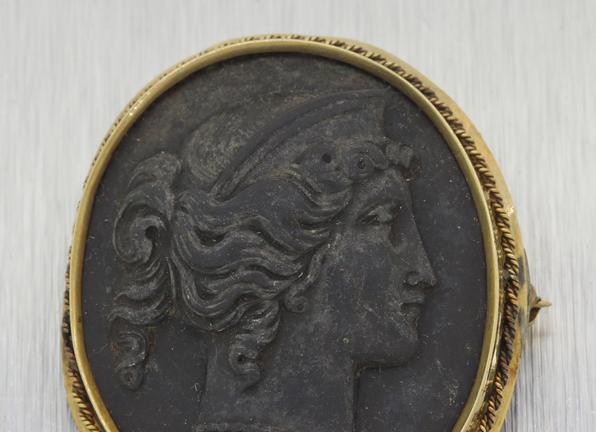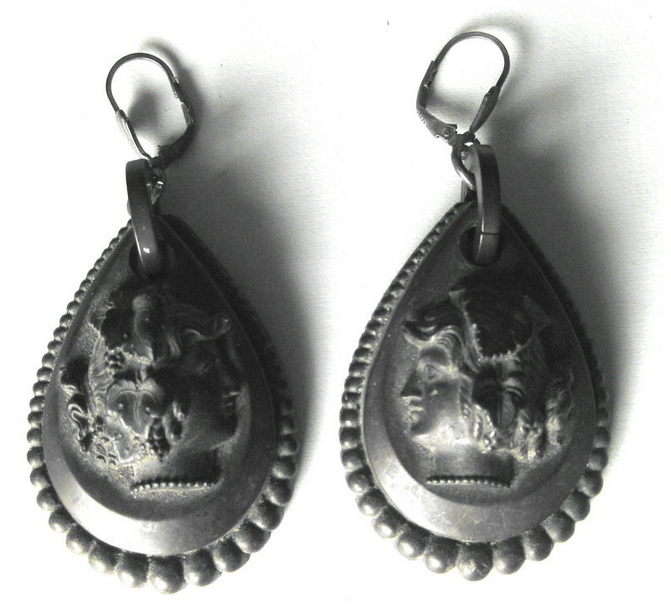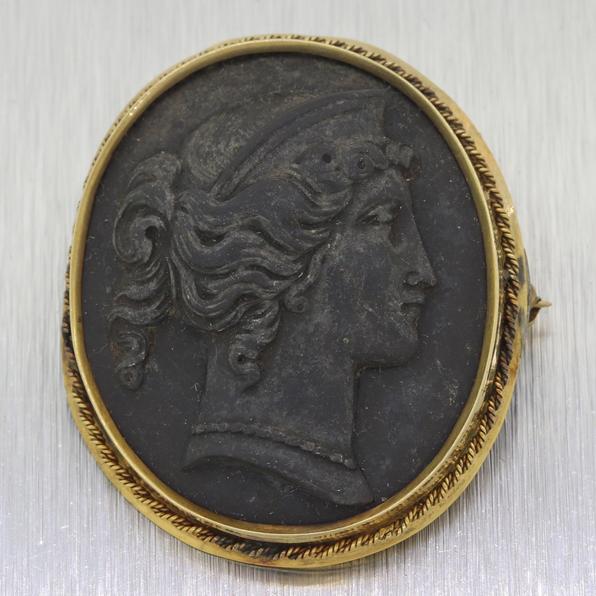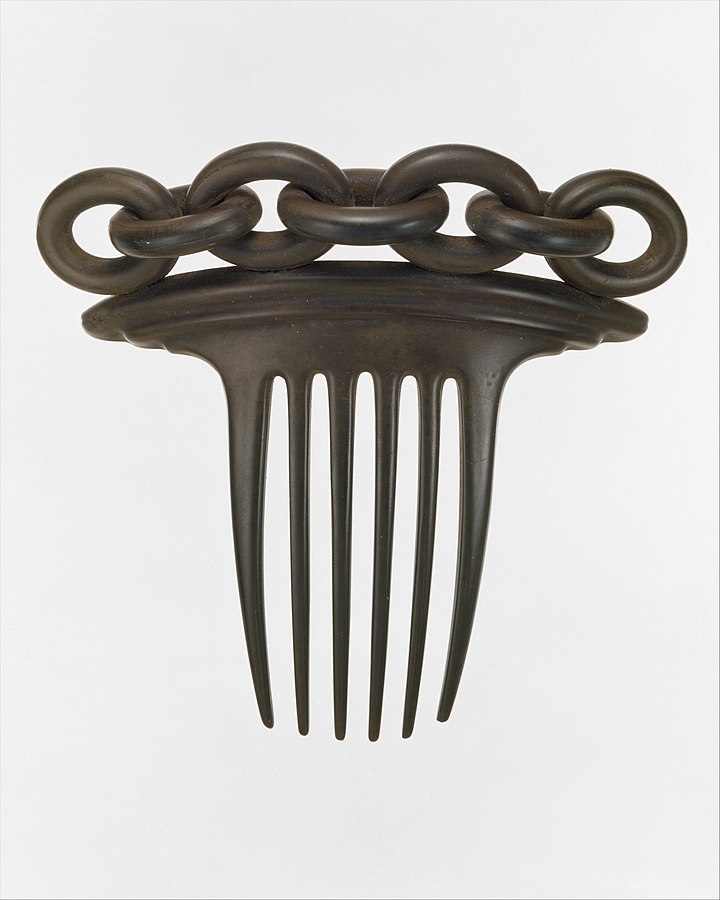The Allure of Black

by Sally Norton, First published for the November/December 2006 issue of Finery
Whitby Jet became extremely popular for jewelry in the 19th century. While some black jewelry was meant to be worn during mourning, black jewelry was fashionable as well, and worn for its beauty. The most prized jet is from Whitby, England where it has been washing up on shore since prehistoric times. Due to its popularity jet soon had imitators. With its light weight and deep black luster it was both practical and elegant. But the passion for Jet has often outstripped the capacity of the natural reserves. Bog Oak, glass, Gutta Percha, Horn, Lava, Vulcanite, and wood were popular jet ‘imitations’.
Jet is fossilized wood formed from the prehistoric trees similar to the monkey puzzle tree. It is sometimes possible to spot the wood grain on a polished piece of jet. The back of flat items such as bracelet sections, pendants and flat sections of necklaces are the best places to look. You will likely need a magnifying glass to see the wood grain. Jet can be highly polished to give an intense black colour that never fades. Jet is a tough material but lacks hardness. Its softness enabled the craftsman to easily carve it. When scratched, jet produces a thin, brown powder. When heated, it smells much like burning coal.

Jet is a solid and therefore cannot be put into a mold and shaped. All the shaping, carving and engraving had to be done by hand and is, therefore, very sharp with flat facets and precise detail. The carving on jet is usually deep. Hand cut jet produces excellent three-dimensional carvings. Glass, vulcanite and plastic can all be molded and retain give away signs of the molding such as rounded edges, poor quality patterns and molding marks.
Bog Oak
This material is a hard black semi-fossilized wood originating from the peat bogs of Ireland. Small jewelry items usually have typically Irish designs and decoration. Bog Oak is very dark brown in color rather than a deep black and does not polish as well as Jet.

Glass
Black glass jewelry was produced in large quantity in France; therefore, such pieces came to be called French Jet. Jewelry made from glass will be heavier than a similar piece made of Jet. French Jet jewelry was usually molded rather than carved and has a bright shine. It is often faceted. It was cheaper to produce and had tremendous popularity. When heated glass jewelry will not burn.

A limited amount of black glass jewelry was also produced in England where it was known as Vauxhall glass. Vauxhall glass was sideline of a mirror factory in the Vauxhall region of London. When held to the light, jewelry made of Vauxhall glass show a slightly reddish or purplish tinge.
Gutta Percha
Gutta Percha is a natural latex produced from the sap of evergreen trees in Southeast Asia. Allowing this fluid to evaporate and coagulate in the sun produced a latex which could be made flexible again with hot water, but which did not become brittle. It became very popular in the 1850s and through the 1860s for molded jewelry and also for hair combs (due to its flexibility). Its popularity declined in the 1870s. It does take a shine as well as Jet but, it does have a richness in its coloration that is very appealing.
Horn
Horn is a lightweight material and can be easily carved or molded. When stained black it bears a strong resemblance to jet. Horn does not have the deep glossy black of Jet. When scratched it produces a grey powder. When burnt, it smells of burning hair.
Lava
The excavations that began at the ruins of Pompeii in the late 1700’s had a widespread influence on the popular culture of the 19th century. of the period. Artifacts from the site had become popular and Italians began to carve souvenir cameos from the multi-colored lava flows of Mount Vesuvius which ranges in color from off-white or yellowish to varying shades of gray, when it’s not been dyed. The lava, which is porous and easy to carve, lends itself to high-relief designs with intricate detail. The images in Victorian cameos are primarily of classical figures or biblical scenes. A large number of lava cameos originated in the nineteenth century.
Vulcanite
Vulcanite was created in 1846. It is a mix of rubber and sulphur heated to 1150C. It is lightweight. It doesn’t have the sheen of real jet; this is obvious when a piece of Vulcanite jewelry is placed next to a piece made of Jet. In time, Vulcanite turns from black to a light to medium brown color. When burnt, it gives off a strong smell of burning rubber. When scratched, Vulcanite produces a thin, brown powder.
Wood
Some cheap jewelry was made using dark woods such as ebony or by staining lighter woods or painting them with black enamel paint. The finish is likely to be scratched or worn, revealing the natural wood beneath.






goldelite
wow, you’ve got some amazing jewelry there! I love back jewelry very much. These blogs are really amazing.